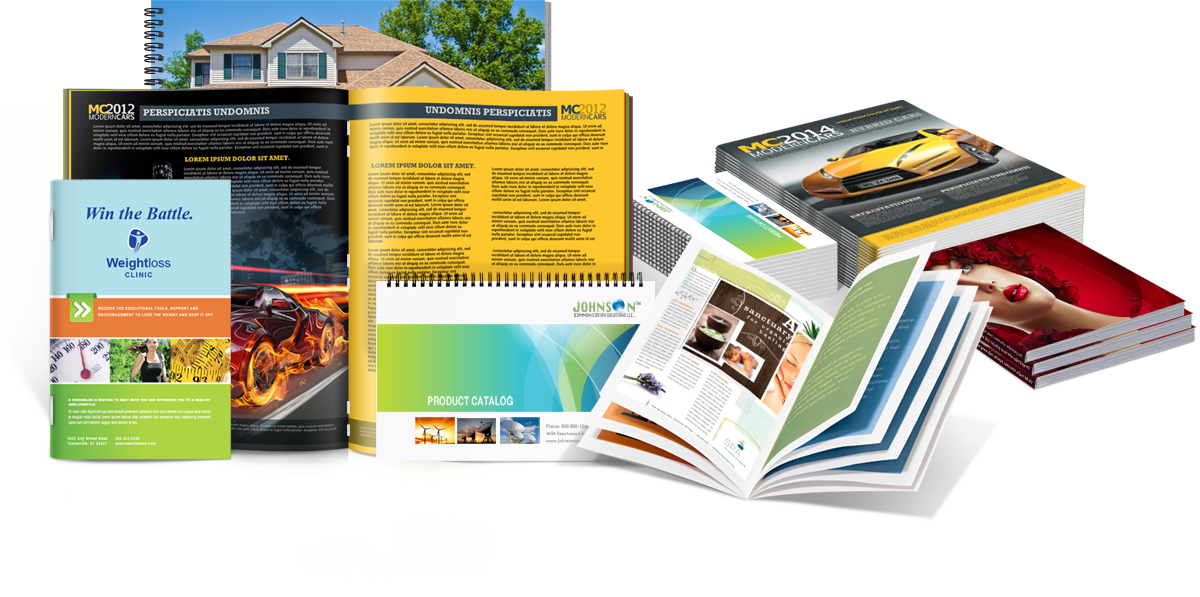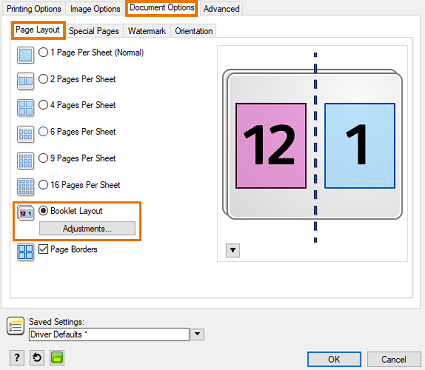Unlock the Power of Augmented Reality in Your Booklet Printing Projects
Unlock the Power of Augmented Reality in Your Booklet Printing Projects
Blog Article
The Essential Guide to Recognizing Brochure Printing Options and Techniques
The process of booklet printing involves several considerations that can considerably impact the final item. From choosing the appropriate style and dimension to understanding the subtleties of binding approaches, each choice plays an essential function. Furthermore, factors such as paper supply and printing methods further affect the efficiency of the pamphlet. As one browses these options, it ends up being necessary to grasp exactly how they interconnect and what that implies for the general result.
Understanding Brochure Dimensions and styles
When taking into consideration brochure printing, recognizing the different styles and dimensions readily available is necessary for attaining the wanted presentation. Brochures can be generated in various formats, consisting of saddle-stitched, spiral-bound, and perfect-bound, each offering distinctive advantages. Typical sizes vary from conventional letter (8.5 x 11 inches) to smaller alternatives like A5 (5.8 x 8.3 inches), permitting versatility based upon web content and target audience.Selecting the appropriate dimension can affect both the design and reader interaction. Bigger dimensions could suit visually driven web content, while smaller sized styles might be much more easy to use and mobile. In addition, the number of web pages influences the option of binding approach, as thicker pamphlets may call for sturdier bindings. Inevitably, understanding these aspects enables for a much more tailored technique, guaranteeing that the last product lines up with the desired message and visual, boosting the total efficiency of the interaction.
Selecting the Right Paper Supply

Binding Methods: Choices and Factors To Consider
When it comes to binding techniques for brochures, several options are available, each with distinct benefits. Saddle stitch binding supplies an affordable option for thinner booklets, while excellent binding techniques offer a more refined try to find thicker publications. Wire-O binding attracts attention for its toughness and simplicity of usage, making it perfect for documents that need versatility.
Saddle Stitch Binding
Saddle stitch binding offers a sensible and affordable solution for setting up pamphlets, making it a preferred choice among publishers and organizations. This binding approach includes folding sheets of paper in fifty percent and stapling them along the fold line, producing a neat and well organized look. Commonly appropriate for pamphlets with a reduced page matter, saddle sewing is ideal for publications, brochures, and instructional materials. The simplicity of this method allows for quick production and is typically preferred for advertising items or short runs. It is essential to keep in mind that saddle stitch binding may not be suitable for thicker brochures, as the spinal column may not hold up under raised weight. In general, it continues to be a reputable choice for numerous printing tasks.
Perfect Binding Methods
Perfect binding is a commonly used method that offers a professional and polished finish to booklets and magazines. This approach includes gluing the web pages with each other at the spine making use of a solid adhesive, enabling for a tidy side and the ability to hold a bigger number of web pages contrasted to saddle stitching. Perfect binding is specifically appropriate for thicker booklets, such as directories and yearly reports, where a durable, flat back is desired. In addition, it provides the alternative for a published cover that can be designed to enhance aesthetic appeal. Considerations such as page count, paper weight, and the meant use of the pamphlet must be taken into account, as they can influence longevity and overall top quality.
Wire-O Binding Alternatives
Wire-O binding, recognized for its toughness and adaptability, provides an excellent option for brochures that need simple page transforming and an expert appearance. This binding approach uses a collection of steel loopholes that hold pages firmly, enabling them to exist flat when open. It is especially appropriate for handbooks, brochures, and discussions due to its durable nature. Wire-O binding is readily available in various shades and diameters, accommodating different web page matters and densities. Additionally, it permits the inclusion of covers and tabs, enhancing the pamphlet's total aesthetic. Factors to consider for Wire-O binding include the choice of cable color, the size of the loops, and the extent of customization desired, all of which can exceptionally affect the final item's look and functionality.
Digital vs. Offset Printing: Which Is Best for You?
When picking a printing method for pamphlets, comprehending the differences in between electronic and balance out printing is vital. Digital printing uses contemporary innovation to produce top quality prints rapidly and affordably, making it ideal for short runs or tasks calling for fast turnaround times. It allows for modification, offering the ability to publish on-demand with minimal waste.In comparison, balance out printing is a conventional technique that stands out in producing big amounts with regular quality. It includes transferring ink from a plate to a rubber blanket, then to the paper, which leads to precise details and vibrant shades. Counter printing normally needs longer configuration times and is a lot more economical for bigger volumes.Ultimately, the choice in between digital and offset printing depends on task demands, budget, and wanted amount. For tiny, time-sensitive jobs, digital could be the most effective choice, while offset may be preferable for bigger, premium manufacturings.

Designing Your Brochure: Tips and Ideal Practices
When making a brochure, cautious interest to format, font style selection, and color use can substantially boost its effectiveness. A well-structured layout guides the reader's eye, while appropriate font styles guarantee readability and communicate the desired tone. Furthermore, effective usage of shade can stimulate feelings and highlight essential information, making the total layout extra impactful.
Picking the Right Format
Just how can one effectively choose the best design for a brochure? First, it is essential to review the booklet's purpose and target audience. A clean, arranged format enhances readability and engagement. Using a grid system can aid in lining up elements regularly, creating an expert look. In addition, incorporating aesthetic power structure via differing dimensions and positionings of images and text can guide the reader's eye and emphasize crucial details. It is additionally crucial to leave adequate white room, which prevents overcrowding and permits better focus. Finally, examining different designs with mock-ups can offer understanding into just how the layout carries out in real-world situations, guaranteeing that the end product meets both practical and aesthetic demands.
Selecting Proper Typefaces
A well-chosen font style can significantly enhance the total design of a pamphlet, matching the design and reinforcing the content's message. The choice of typefaces need to take into consideration readability, especially for body text, as it ensures the details additional info comes to all viewers. Sans-serif fonts are often preferred for digital layouts, while serif fonts can offer a standard feeling in printed materials. It's advisable to restrict font selections to 2 or three to keep visual coherence. Furthermore, typeface dimension plays a crucial duty; headings need to be unique yet not overwhelming, while body text need to be comfortable for reading. When choosing fonts, alignment with the booklet's style and target market is vital for effective interaction and aesthetic appeal.
Efficient Use of Color
Shade works as a powerful device in pamphlet design, guiding and shaping assumptions viewers emotions. It can evoke sensations of calmness, count on, or excitement, depending upon the colors you can find out more picked. Developers should consider shade concept concepts, ensuring that the picked combination aligns with the brochure's message and target market. For instance, using cozy shades like red and orange can develop urgency, while cooler tones like blue and environment-friendly foster tranquility.Additionally, contrast plays an essential duty; complementary colors can improve readability and aesthetic allure. Consistency in shade use across pages even more reinforces brand name identity and cohesion. Ultimately, efficient shade execution not only captures interest yet additionally reinforces the pamphlet's purpose, making it an important facet of effective design.
Ending Up Touches: Coatings and Special Effects
While numerous consider the material and design of a pamphlet one of the most critical components, the completing touches, such as coatings and unique effects, play an important function in enhancing its total charm. Coatings can give security and longevity, making sure that the pamphlet stands up to wear and tear. Matte coatings provide an innovative, non-reflective surface, while glossy layers can make colors show up more attractive and vivid. Special effects, like embossing or aluminum foil marking, add a responsive dimension that can produce a remarkable impression. These techniques can highlight certain locations, accentuating important details or developing visual interest. In addition, UV finishing can supply a high-shine surface that boosts the total look.Together, these ending up touches not only enhance the pamphlet's aesthetic but additionally connect expertise and focus to information, ultimately leaving a long lasting effect on the reader.
Price Factors To Consider for Booklet Printing
Recognizing the numerous expense considerations for booklet printing is crucial for companies and services aiming to optimize their spending plans. Key factors influencing expenses consist of the choice of paper, binding, and ink techniques. Better materials, such as exceptional paper or specialized inks, typically increase the total expense. Additionally, the dimension and web page count of the pamphlet play a considerable duty; bigger brochures call for even more resources and time to produce.Another important factor to consider is the printing strategy, anonymous whether digital or countered, as each has its very own pricing framework and viability for different quantities. Services ought to also factor in layout costs, which can vary based upon complexity and using expert solutions. Eventually, delivery and handling charges can contribute to the total, especially for large orders. By examining these components, organizations can make enlightened decisions that align with their economic capabilities while attaining the preferred high quality in their printed products.
Regularly Asked Concerns
What Are the Environmental Impacts of Pamphlet Printing?
The environmental impacts of pamphlet printing consist of deforestation from paper production, carbon exhausts from transport, and waste generation from disposed of products - Booklet Printing. Lasting methods, such as making use of recycled paper and environment-friendly inks, can mitigate these effects
Just How Can I Ensure Shade Precision in My Booklet?
To guarantee shade accuracy in a pamphlet, one need to utilize calibrated monitors, employ professional shade profiles, conduct test prints, and pick high-quality printing services that supply color matching and proofing options for best outcomes.
What Is the Normal Turn-around Time for Brochure Printing?
The typical turnaround time for booklet printing varies depending on the intricacy and amount - Booklet Printing. Usually, it varies from a few days to two weeks, affected by factors such as printing methods and finishing needs
Exist Minimum Order Quantities for Brochure Printing?

Can I Publish Booklets in Several Languages?
Publishing pamphlets in numerous languages is feasible. Many printing services use alternatives for multilingual or multilingual layouts, enabling effective communication. Cautious preparation warranties that make components fit numerous languages without compromising readability or aesthetics. Furthermore, factors such as paper stock and printing strategies additional influence the performance of the booklet. When thinking about brochure printing, comprehending the different formats and sizes available is vital for achieving the desired presentation. When selecting a printing method for pamphlets, recognizing the distinctions between digital and balance out printing is essential. Additionally, the size and page matter of the pamphlet play a substantial duty; larger booklets require more resources and time to produce.Another crucial consideration is the printing technique, whether digital or balanced out, as each has its own rates framework and suitability for different amounts. The environmental impacts of pamphlet printing consist of deforestation from paper manufacturing, carbon exhausts from transportation, and waste generation from discarded products.
Report this page